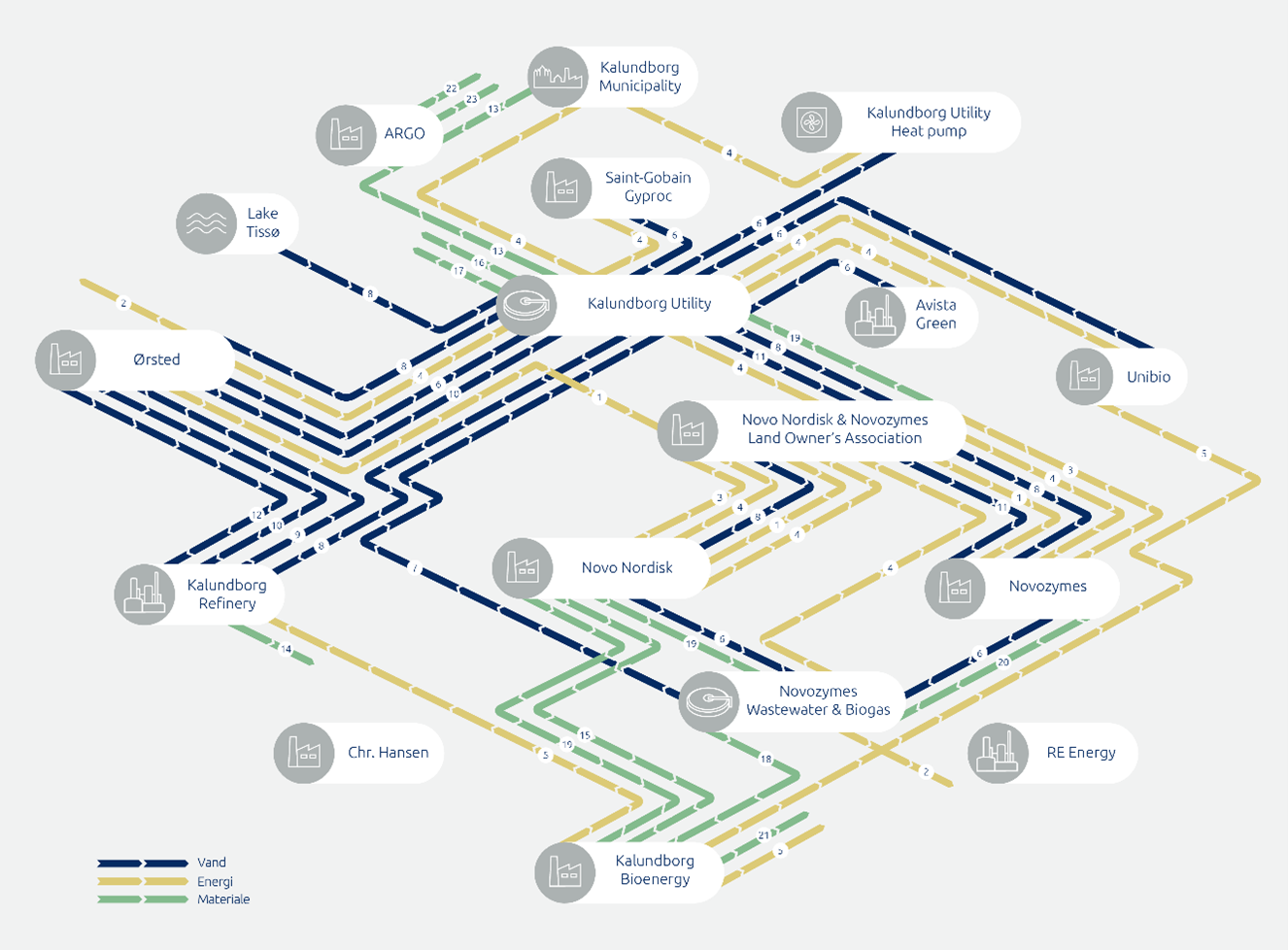Industrial Symbiosis and the Circular Economy of Water
By CEO of Kalundborg Utility, Hans-Martin Friis Møller & Head of the Secretariat in Kalundborg Symbiosis, Lisbeth Randers. The blog post is part of a series of perspectives leading up to the IWA World Water Congress & Exhibition in Copenhagen in September 2022.
In Kalundborg, Denmark, one company´s waste or residual is another company’s resource. This is the site of the world’s first Industrial Symbiosis, which has created value through a symbiotic and circular approach to industry and production for 50 years. The city’s industrial companies work together across sectors to share their surplus of energy, water, and residual materials.
Symbiosis saves partners and the environment 4 million m3 of groundwater every year by using surface water (corresponding to half of our groundwater use). We save the environment 586,000 tons of CO2 and recycle 62,000 tons of residual materials. Since 2015, this innovative process has helped reduce CO2 emissions by 80%.
Creating symbiosis takes time and requires data and mutual trust between the parties. It also requires experience, competencies, knowledge, and an innovative approach.
How does symbiosis work? Collaboration is key. Within the Symbiosis system, public and private industrial companies are physically connected through pipelines, so companies can share their surplus. Symbiosis allows companies to trade waste and resources. It creates profit on the bottom line and attracts talented students, researchers, and specialists to the area. Symbiosis can be the solution of the future as it facilitates sustainability and profit going hand in hand.
Our vision is that the Kalundborg Symbiosis will be the world’s leading industrial symbiosis with a circular approach to production. For us, symbiosis is a local partnership where one provides, shares, and reuses resources. We are currently exploring the possibility of expanding our collaborations into regional partnerships.
We plan to establish a green energy motorway in which excess heat is collected through interconnections of the various companies and transported to the capital’s district heating network. The aim is for the heat to be utilised in Holbæk to phase out natural gas.
 Fig. 1: The figure shows the different streams in the symbiosis.
Fig. 1: The figure shows the different streams in the symbiosis.
An example of green conversion
- The companies use the heat and the wastewater’s organic content to produce biogas.
- At the treatment plant, the hot water speeds up the biological processes so that more than twice as much wastewater can be treated.
- The heat pump utilises residual heat before discharging the treated wastewater.
The Kalundborg Wastewater Treatment Plant receives approximately 7 million m3 of wastewater per year The treated wastewater has an average temperature of 24-25 degrees Celsius and is led to a heat exchanger where a heat pump uses electricity to extract the energy and boost it up to 72-87 degrees for district heating. This takes place during periods when district heating is most necessary in the city.
By cooling the wastewater by 10 degrees, the heat pump can produce approx. 80,000 MWh district heating annually, covering over 30% of Kalundborg Utility’s annual need of district heating. The heat pump makes it possible to utilise even more of the heat from the wastewater from the various industries in Kalundborg.
This is just one example of green conversion amongst many within the Kalundborg Symbiosis.
Contact Kalundborg Symbiosis
We wish to share our knowledge regarding industrial symbiosis, how to facilitate a local partnership with resources in focus, how public and private companies work together – and many more insights our long experience has granted us.
Visit the Kalundborg Industrial Symbiosis (Tour 8) as part of the IWA World Water Congress & Exhibition and experience first-hand how private enterprises are exchanging residuals and by-products from industrial production in closed cycles – with significant water and energy savings! (Technical Tours | World Water Congress & Exhibition)
Contact us: symbiosecenter@kalundborg.dk
Learn more: www.symbiosis.dk

